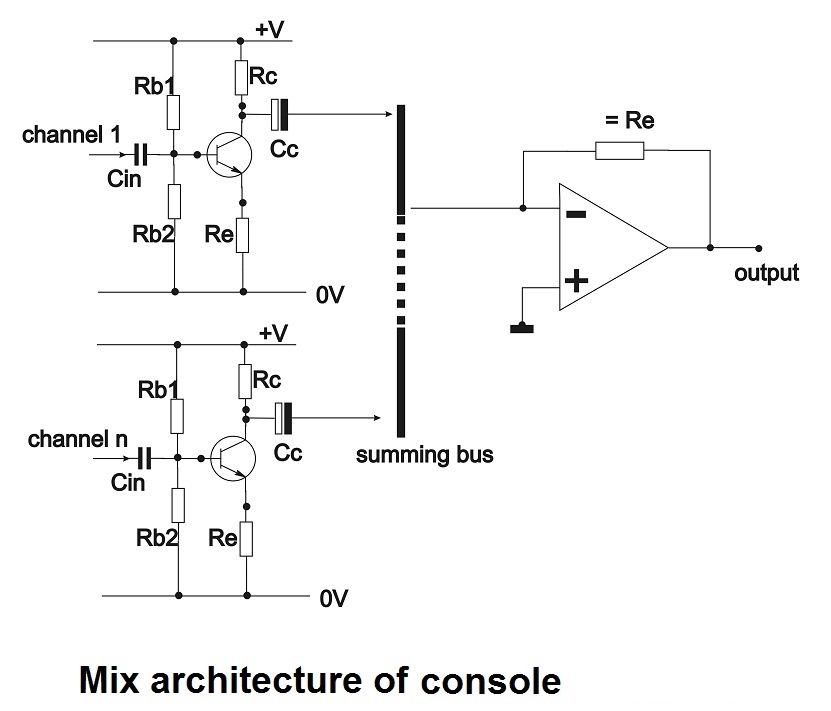
This console was produced by Electronic and Musical Industries Research Laboratories, Hayes, to a design brief submitted by the engineers at the company's studios in London NW8. The requirement was for a transistorized ("solid state") 24 channel to 8-track mixing console to replace the tube mixers which had been in use at the studios since the early 1960s. A specification for the console was drafted in December 1967, and a prototype was delivered in the fall of 1968 and installed in Studio 2 in December. In time then to record The Beatles last album, the eponymous Abbey Road in July 1969.

"To have made each line output suitable for feeding a 200 load would have involved increasing the power dissipation of the output stage by a factor of 10. In rare cases where it may be required to drive a device with an input impedance of less than 2k , it is much more economical to provide a suitable amplifier than to increase the power to all the mixer output amplifiers."
The circuitry in the mixer is all solid-state: not a valve in sight! And all amplifiers incorporate a considerable amount of negative feedback. Mixer circuits are not passive (as in the tube consoles) but are of the virtual earth type and are fed from high impedance current sources and are terminated by very low input impedance, virtual earth amplifiers.
The signal level chosen within the mixer is unusually low: -10dBV. But as its designers state in the manual. "This is the highest level which, with a 20dB overload margin, can be handled simply and conveniently, without transformers, by transistors fed with 20V supplies." By today's standards, this sounds pretty incredible: most mixers today run at +4dBu on supplies lower than +/- 20volts. But this was 1968!
All the active circuitry is derived from a family of amplifier stages (sub-divided into "Types" A, B, C, D etc.).
The "workhorse" gain provider inside the console is Amplifier A and a version of it exists for the all-important microphone amplifiers (known as Amplifier D). The active circuit comprises three, d.c. coupled, NPN transistors. The first two transistors provide voltage gain and the final transistor is connected as an emitter follower output stage. Overall feedback is provided by connecting the emitter of the first transistor to a tapping across the output.
Needless to say, the console sounded very different from its tube forebears and it had enormously enhanced capabilities all of which contribute (along with the change to 8-track tape-recorders) to the different sound of Abbey Road to all the previous albums by The Beatles. The transistorised mixers had a distinguished stay, being responsible for the tracking and mixing of many highly regarded albums, amongst them: Dark Side of the Moon by Pink Floyd and Turn of a Friendly Card by The Alan Parsons Project. The consoles remain valuable and sought after.


Address all mail to sales@phaedrus-audio.com
